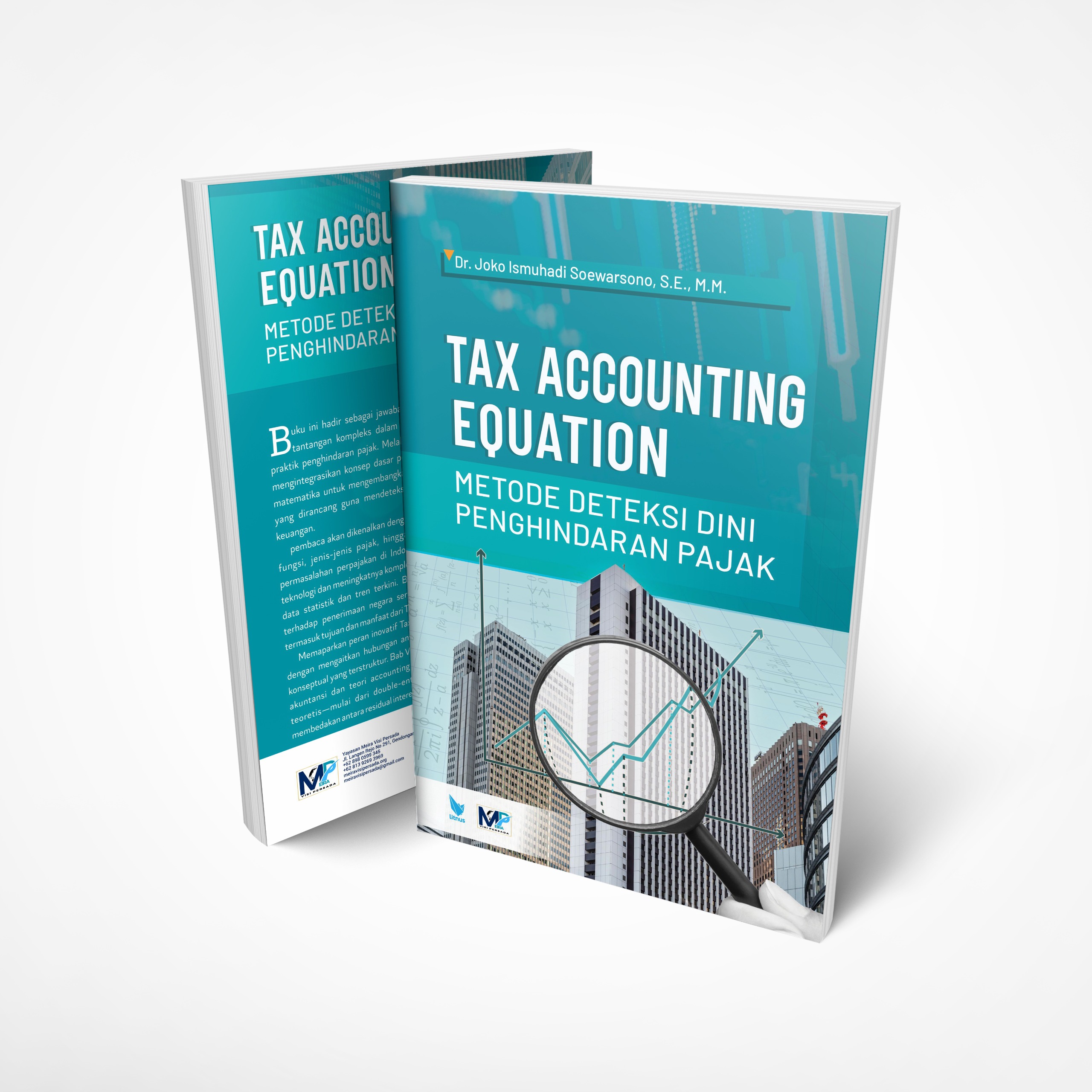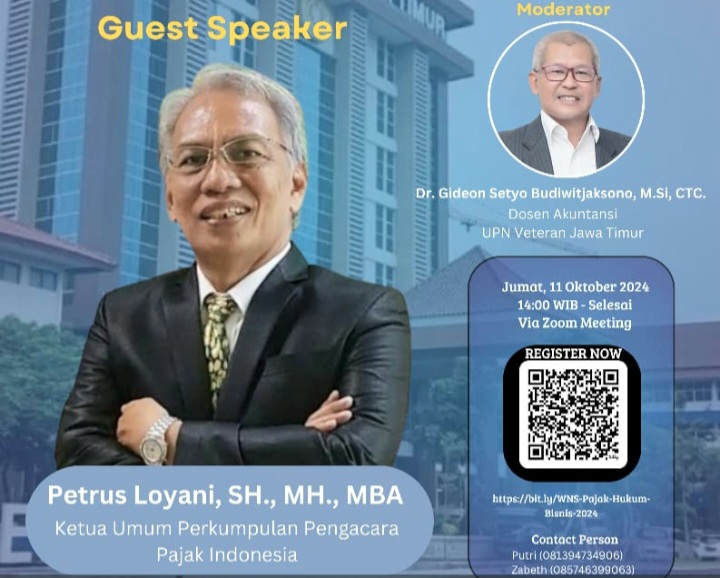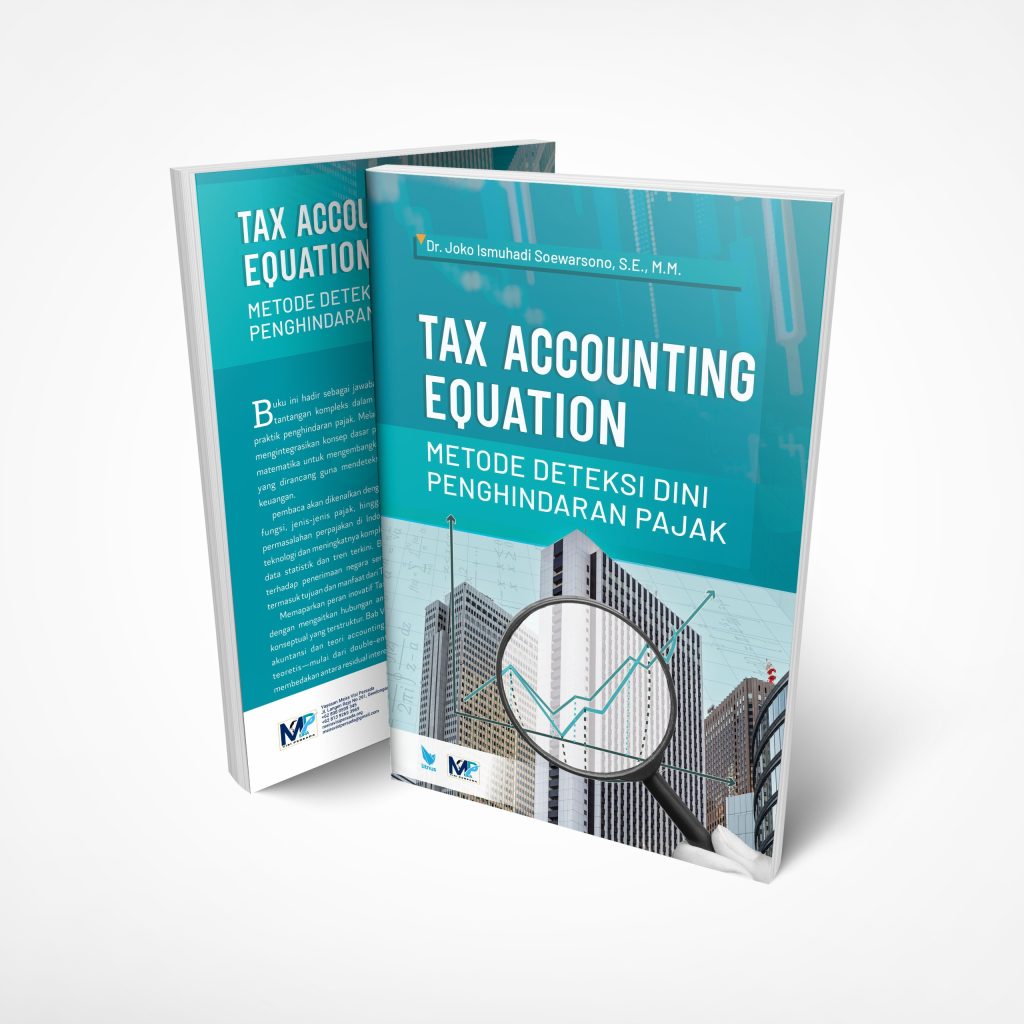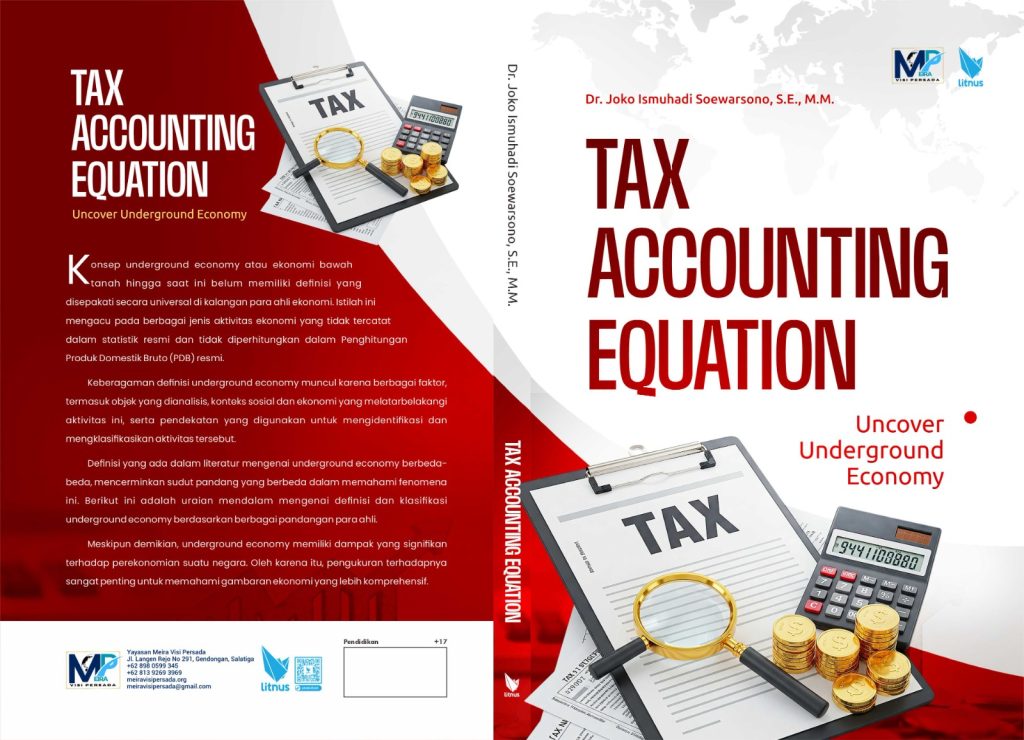
The Convergence of Accounting and STEM: A New Era of Innovation and Expertise
- Ekonomi
Saturday, 31 May 2025 16:07 WIB

Jakarta, fiskusnews.com:
Accounting, traditionally viewed as a cornerstone of business administration, is increasingly intertwined with the principles and methodologies of Science, Technology, Engineering, and Mathematics (STEM). This transformation is driven by rapid technological advancements, the proliferation of vast datasets, and the growing demand for sophisticated analytical techniques in financial management. The evolving landscape necessitates a re-evaluation of accounting as a discipline, revealing its deep connections to STEM fields and its crucial role in today’s technologically advanced economy. This report will delve into the multifaceted relationship between accounting and STEM, exploring the technological tools reshaping the profession, the mathematical and quantitative methods underpinning modern accounting practices, the inherent problem-solving nature of the field, the emergence of specialized roles at this intersection, and the ongoing movement to formally recognize accounting as a STEM discipline.
The Technological Foundation of Modern Accounting
The modern accounting profession is inextricably linked to a suite of powerful technologies that have revolutionized how financial data is managed, analyzed, and reported. Among these, Enterprise Resource Planning (ERP) systems stand out as foundational tools that integrate finance and technology. These comprehensive platforms, such as SAP and Oracle, serve as the backbone for numerous organizations, streamlining a wide array of business processes, including the critical functions of finance and accounting. ERP systems offer a centralized repository for financial data and automate numerous tasks, leading to enhanced efficiency and accuracy in financial workflows. These systems typically include modules designed for various accounting functions, such as general ledger, accounts payable and receivable, budgeting, forecasting, compliance management, and financial reporting. The intuitive user interfaces of these platforms facilitate collaboration across different teams within an organization, while the automation capabilities and accurate reporting features significantly improve overall financial management.
While both SAP and Oracle provide robust ERP solutions with integrated Artificial Intelligence (AI) functionalities, they often cater to different segments of the market and possess distinct characteristics. Oracle is frequently positioned as a cloud-first solution, offering a unified cloud-based ERP system designed to streamline end-to-end business processes. SAP, on the other hand, boasts a strong presence in industries like manufacturing and is known for its highly customizable and modular ERP software, allowing businesses to tailor the system to their specific and complex requirements. The implementation timelines and associated costs can also vary significantly between these systems. Microsoft Dynamics 365 represents another significant player in the ERP landscape, particularly favored by small and medium-sized businesses (SMBs) due to its seamless integration with the broader Microsoft ecosystem and its more user-friendly interface. The increasing trend towards cloud-based ERP solutions offers numerous advantages, including enhanced accessibility of data from any location, improved real-time collaboration among team members, the ability to easily scale resources up or down based on business needs, and significant cost efficiencies. The adoption of ERP systems underscores the indispensable role of technology in handling the intricate and voluminous financial data that modern organizations generate and rely upon for informed decision-making. The choice of a specific ERP system often hinges on a careful evaluation of an organization’s unique operational needs, its size, and the specific industry in which it operates. The growing preference for cloud-based solutions reflects the broader technological trends emphasizing accessibility, flexibility, and collaborative work environments.
Beyond ERP systems, data analytics platforms have become indispensable tools for accounting professionals seeking to extract meaningful insights from financial data. Platforms such as Tableau and Power BI are now widely used by accountants to analyze extensive financial datasets, transforming raw numbers into actionable intelligence that informs critical business decisions. These platforms offer a range of capabilities, including sophisticated data visualization techniques that allow for the creation of charts, graphs, and dashboards to identify trends and patterns. They also facilitate in-depth data exploration through features like drilling down into data points and filtering information to uncover hidden insights. Furthermore, these platforms support data modeling, enabling accountants to establish relationships between different datasets and perform complex analyses. Collaboration features allow teams to work together seamlessly on data analysis projects, sharing findings and insights effectively. While both Power BI and Tableau offer similar functionalities, Power BI, being a Microsoft product, often integrates more smoothly with other Microsoft applications and tends to be more cost-effective. Tableau, on the other hand, is often recognized for its more advanced and flexible data visualization capabilities and its ability to handle very large datasets with greater efficiency. Both platforms provide connectivity to a wide variety of data sources, including traditional spreadsheets like Excel, various types of databases, and cloud-based services. By leveraging these data analytics platforms, accountants can move beyond basic reporting to perform more advanced analyses, consolidate data from disparate sources, and communicate their findings through interactive and easily understandable reports and dashboards. The increasing reliance on these tools underscores the growing need for accounting professionals to possess strong analytical skills and the ability to effectively work with and interpret large volumes of data.
Artificial Intelligence (AI) and automation tools are also profoundly transforming the accounting landscape by automating numerous routine and repetitive tasks that were once labor-intensive and time-consuming. These technologies handle tasks such as data entry, account reconciliations, and the generation of standard reports with increased efficiency and accuracy. Generative AI programs, including tools like ChatGPT, CoPilot, and Gemini, are providing accountants with capabilities to automate even more complex tasks, such as drafting initial versions of emails, performing specific functions within Microsoft Office applications, reviewing and suggesting improvements to proposal documents, and summarizing video call transcripts, thereby significantly enhancing daily efficiency. Furthermore, AI is being increasingly integrated directly into accounting software packages, offering functionalities such as automated fraud detection, more efficient auditing processes, and assistance with tax preparation. AI-powered solutions possess the ability to analyze vast quantities of unstructured data, such as text documents and emails, through Natural Language Processing (NLP), enabling accountants to derive more accurate and valuable insights that might be missed through traditional methods. In the critical area of fraud detection, AI offers sophisticated capabilities for advanced anomaly detection, real-time monitoring of transactions, and predictive analytics, leading to higher detection rates and a reduction in false positives. AI is also proving to be a valuable asset in forensic accounting and litigation support, where it can rapidly analyze substantial amounts of information to identify inconsistencies, potential fraud indicators, and budgetary alterations, as well as automate the often time-consuming process of document review in legal cases. The growing adoption of AI in accounting signifies a fundamental technological shift that requires accounting professionals to develop new skill sets, such as prompt engineering for interacting effectively with AI systems, and to cultivate the ability to work collaboratively with these intelligent tools. AI’s impact extends to enhancing efficiency, improving accuracy, and enabling more sophisticated analysis of complex financial data, further solidifying the connection between accounting and technology.
Blockchain technology represents another significant innovation with the potential to revolutionize various aspects of the accounting profession by offering a decentralized, distributed digital ledger for recording transactions in a secure and transparent manner. This technology is characterized by its immutability, meaning that once a transaction is recorded on the blockchain, it cannot be altered, ensuring the integrity of the data. Its decentralized nature, where the ledger is distributed across multiple computers rather than being controlled by a single entity, enhances security and reduces the risk of manipulation. The transparency offered by blockchain, where all participants can typically access the same data, fosters trust and accountability. Blockchain technology facilitates the implementation of triple-entry accounting, a system that adds a shared, cryptographically secured third entry to every transaction recorded in the traditional double-entry system, thereby enhancing both accuracy and security. Smart contracts, which are self-executing contracts with the terms of the agreement directly written into code, can automate various financial agreements and processes, such as supplier payments and tax compliance, without the need for intermediaries, leading to significant efficiency gains. Blockchain can also be utilized for creating traceable audit trails, automating certain audit processes, authenticating transactions, and securely tracking the ownership of various assets. Despite its numerous potential benefits, the widespread adoption of blockchain in accounting faces challenges, including the need for accounting professionals to acquire new and complex technological skills, regulatory uncertainties surrounding its use in different jurisdictions, a current lack of standardized practices for its application in accounting, and potential issues with scalability when the network experiences a high volume of transactions. Nevertheless, blockchain technology holds significant transformative potential for the accounting profession by promising enhanced security, greater transparency, and increased efficiency in financial transactions and record-keeping.
Cloud computing has emerged as a foundational technology that underpins much of the technological transformation within the accounting profession, providing instant access to data and computational resources via remote servers hosted on the internet. This shift to cloud-based systems, where financial data is stored in a centralized location accessible through the internet, offers numerous advantages for accounting teams. These benefits include the flexibility to access data and applications from any device and any location, facilitating remote work and collaboration among team members regardless of their geographical location. Cloud computing also provides scalability, allowing firms to easily adjust their storage and processing resources based on their changing needs, and it often results in cost efficiencies by eliminating the need for expensive on-premises IT infrastructure and maintenance. Furthermore, cloud solutions can automate various input processes and enhance risk control and reporting mechanisms within accounting workflows. Cloud computing has become an integral component of modern accounting practices, providing the essential infrastructure that supports many of the other advanced technologies being adopted by the profession. Its ability to expedite accounting tasks with fewer resources leads to increased efficiency and overall improved performance for accounting functions within organizations.
Mathematical and Quantitative Methods in Accounting Practice
Modern accounting practice increasingly relies on sophisticated mathematical and quantitative methods to analyze financial data, make informed forecasts, and assess and manage financial risks. Data analysis and statistical applications have become integral to financial reporting, enabling accountants to move beyond simple historical reporting to provide valuable insights into past performance and future trends. Accountants routinely employ statistical methods to analyze past financial performance and identify current trends to develop projections about future financial outcomes. These methods are used to forecast key financial metrics such as consumption patterns, earnings potential, cash flow projections, and the book value of assets. Predictive statistics plays a crucial role in this process, involving the analysis of historical data and the application of statistical algorithms to anticipate future trends and behaviors within the financial landscape. For instance, accountants utilize predictive statistics to enhance revenue forecasting by examining historical sales data, understanding customer behavior, and analyzing prevailing market trends. Techniques like regression analysis are employed to identify the key factors that significantly impact an organization’s critical performance indicators, allowing for a deeper understanding of the drivers behind financial results. Moreover, statistical sampling techniques are frequently used to improve the accuracy and efficiency of both auditing procedures and broader financial analysis, enabling accountants to draw reliable conclusions about large populations of data by examining a representative subset. The widespread application of statistical methods in accounting underscores the inherently quantitative nature of the modern profession. Accountants are increasingly expected to possess a strong understanding of statistical concepts and their practical application to effectively analyze financial data, develop reliable forecasts, and make well-informed assessments of financial risks. This shift signifies a move away from traditional, purely rule-based accounting practices towards a more analytical and data-driven approach.
Financial modeling and forecasting represent another critical area where mathematical and quantitative techniques are extensively applied in accounting. Mathematical models are fundamental tools for making predictions and developing forecasts in quantitative finance, a field that has growing relevance for accounting professionals. Financial modeling involves the construction of mathematical representations of financial variables, relationships, and processes to analyze and predict financial market behavior and various financial phenomena. These models are instrumental in a wide range of applications, including the pricing of complex financial derivatives, the development of sophisticated trading strategies, the assessment and management of financial risk, and the optimization of asset allocation within investment portfolios. By employing mathematical models, accountants and financial analysts can explore and gain a deeper understanding of the intricate relationships that exist between different financial variables, such as interest rates, asset prices, and market volatility. Forecasting, in the context of financial modeling, involves the use of historical data, current information, and prevailing industry trends to estimate a company’s future financial performance. A variety of forecasting methods, including time series analysis, which examines patterns in historical data to project future values, and regression analysis, which identifies the relationship between different variables to make predictions, rely heavily on underlying mathematical and statistical principles. The application of these quantitative techniques in financial modeling and forecasting highlights the strong mathematical foundation required for these critical accounting functions. Accountants who specialize in these areas utilize advanced models and analytical approaches to provide valuable insights into an organization’s potential future financial performance, thereby supporting strategic planning and informed decision-making processes at the highest levels.
Risk assessment and management have also been significantly enhanced through the adoption of data-driven techniques rooted in mathematical and statistical principles within the accounting profession. Statistical analysis is now considered crucial for effectively assessing risk in both insurance and broader financial contexts, enabling professionals to analyze historical data, identify emerging trends, and develop more accurate predictions about potential future risks. Predictive statistics plays a key role in risk management by allowing for the analysis of historical financial data, relevant economic indicators, and other pertinent factors to identify potential risks and areas of vulnerability within an organization’s financial operations. Quantitative measures such as Value at Risk (VaR) are employed to estimate the maximum potential loss in the value of a specific asset or an entire investment portfolio over a defined period and at a given confidence level, providing a statistical framework for understanding and quantifying financial risk. Techniques like Monte Carlo simulation, which involves using random sampling from probability distributions to model and evaluate the potential impact of various risk factors on financial outcomes, are also increasingly utilized, particularly for analyzing complex scenarios where traditional analytical solutions may be challenging to derive. Furthermore, accounting data itself can be leveraged to visualize how different events, products, or operational changes affect an organization’s overall financial health, thereby facilitating the identification and management of potential risks more effectively. The integration of these data-driven techniques into risk assessment and management highlights the growing importance of quantitative skills for accounting professionals. By utilizing statistical methods and sophisticated models, accountants can provide a more robust, data-informed, and proactive approach to identifying, analyzing, and ultimately mitigating the various financial risks that organizations face in today’s dynamic business environment.
Accounting as a Problem-Solving Discipline with Analytical Rigor
Beyond the specific technologies and quantitative methods employed, accounting is fundamentally a problem-solving discipline that demands analytical rigor. Accountants are frequently tasked with identifying and resolving complex financial issues that require a deep understanding of accounting principles, regulations, and business operations. Problem-solving is not merely a peripheral skill in accounting; it is a core competency that involves the ability to recognize financial discrepancies or challenges, to thoughtfully consider a range of potential solutions, and to implement the most effective course of action to ensure accuracy and maintain compliance. For example, accountants often find themselves needing to reconcile differences between various financial statements or to address and resolve issues that arise during the audit process. Given that businesses inherently face numerous problems with financial implications, accountants who possess strong problem-solving skills are highly valued assets to any organization. Effective problem-solving in accounting often requires professionals to develop a thorough understanding of the underlying business problem itself, going beyond just the financial data to grasp the operational and strategic context. This may involve thinking laterally, approaching issues from new and different perspectives to uncover innovative solutions. Furthermore, the ability to anticipate potential sources of inefficiency or ineffectiveness within financial processes is a crucial aspect of proactive problem-solving in accounting, allowing professionals to develop contingency plans to address various challenges before they escalate into more significant dilemmas. The analytical rigor inherent in accounting ensures that these problem-solving efforts are based on sound reasoning, careful evaluation of data, and a systematic approach to identifying root causes and implementing effective remedies.
The application of critical thinking and analytical skills is central to nearly every task that an accountant undertakes. These skills are not limited to complex problem-solving scenarios but are integral to the daily work of interpreting financial data, assessing its impact on an organization, and developing comprehensive and integrated solutions. Beyond the mere manipulation of numbers, accountants must possess the ability to think critically about the financial information they encounter, to analyze its implications, and to understand its relevance to the overall health and strategic goals of the organization. This requires a keen eye for detail, the capacity to manage and interpret large volumes of data accurately, and the ability to ensure that every financial transaction is recorded correctly. Analytical skills, in this context, encompass the ability to identify specific problems, to conduct thorough investigations to gather all relevant facts, and to arrive at logical and well-supported solutions. These skills are applied in various aspects of accounting work, including detecting patterns and trends within financial data, brainstorming potential explanations for observed phenomena, meticulously observing and collecting relevant data, interpreting the meaning of that data, integrating new information into existing frameworks, synthesizing findings into coherent reports, and ultimately making sound decisions based on the available evidence. Modern accounting also increasingly involves the use of data analytics to discern underlying patterns in customer spending, to identify prevailing market behaviors, to anticipate future trends, and even to predict potential regulatory reactions, all of which demand strong analytical capabilities. Critical thinking, a closely related skill, enables accountants to objectively analyze complex situations, to weigh different options and perspectives, and to arrive at logical and often creative conclusions that benefit the business. The emphasis on critical thinking and analytical skills underscores the intellectual rigor that is a defining characteristic of both accounting and STEM fields.
Emerging Professional Roles at the Intersection of Accounting and STEM
The increasing convergence of accounting and STEM has led to the emergence of several specialized professional roles that require a unique blend of skills from both domains. These roles highlight the evolving nature of the accounting profession and the growing demand for professionals who can bridge the gap between traditional financial expertise and advanced technological and analytical capabilities.
Forensic accountants represent a prime example of a role that sits squarely at the intersection of accounting and STEM, particularly data science and technology. These professionals specialize in the investigation of financial crimes, such as fraud and embezzlement, and require a strong foundation in both accounting principles and mathematical and analytical skills. Their work involves utilizing accounting techniques, established auditing processes, and keen investigative skills to actively search for and uncover evidence of financial wrongdoings. Forensic accountants rely heavily on data analysis to meticulously examine financial findings, interpret the results of their investigations, and develop clear and concise presentations of their evidence, often for use in legal proceedings. The key skills essential for success in this field include a meticulous attention to detail, strong data analysis capabilities, creative thinking to uncover hidden schemes, proficiency in using various technology tools, and a well-developed sense of intuition for recognizing anomalies. Forensic accountants often employ specialized computer software to gather and analyze vast amounts of financial documentation and to identify unusual transaction patterns that may indicate fraudulent activity. This role demands not only a deep understanding of accounting but also the analytical and investigative rigor typically associated with STEM fields, making forensic accounting a critical area where these disciplines converge to protect financial integrity and combat financial crime.
Financial Data Analysts are another emerging group of professionals who play a crucial role in bridging the gap between accounting and STEM. These analysts combine their foundational knowledge of accounting principles with the advanced techniques of data science to identify significant trends within financial data and to develop predictive models that help organizations make more informed and strategic decisions. Their responsibilities include the analysis of large and complex financial datasets using a variety of mathematical and statistical techniques to extract meaningful insights and identify key patterns. A significant aspect of their work involves leveraging predictive analytics and developing sophisticated forecasting models to provide data-driven insights that can guide an organization’s financial planning and strategic direction. Financial data analysts also play a key role in data visualization, using platforms such as Tableau and Power BI to create clear and compelling visual representations of complex financial data, making it more accessible and understandable for stakeholders across the organization. Furthermore, these professionals often need to be proficient in implementing and utilizing various technology tools and software, including Enterprise Resource Planning (ERP) systems like SAP and Oracle, and potentially even Artificial Intelligence (AI) tools to enhance their analytical capabilities and automate certain processes. The increasing demand for these specialized skills is reflected in the emergence of STEM-designated Master’s programs in Accounting Analytics at various universities, specifically designed to equip graduates with the necessary blend of accounting and data science expertise. The rise of the financial data analyst role within accounting underscores the growing recognition of the importance of data-driven decision-making and the critical need for professionals who can effectively translate financial data into strategic business intelligence.
The advent of blockchain technology has spurred the creation of a new specialized role: the blockchain accountant. These professionals focus on navigating the unique financial landscape of decentralized finance, specializing in the management of cryptocurrency transactions and the implementation of blockchain technology for ensuring transparent and secure financial reporting. To be effective in this role, blockchain accountants require a solid understanding of the underlying technology, principles of cryptography that secure blockchain transactions, and the functionality of smart contracts that automate financial agreements. Their responsibilities typically include the meticulous tracking and accurate recording of financial transactions involving various types of digital tokens and cryptocurrencies, ensuring compliance with evolving regulations in this nascent field, and providing strategic financial insights to organizations venturing into blockchain-based initiatives. Blockchain accountants often utilize specialized accounting software designed specifically for handling digital assets, which helps them to monitor the often volatile values of these assets and to account for them correctly. The emergence of this role highlights the direct impact of a significant technological innovation on the accounting profession, requiring a new set of specialized skills that blend traditional accounting knowledge with expertise in a cutting-edge STEM field.
IT Auditors play a vital role in ensuring the security, integrity, and reliability of an organization’s information technology systems, which are increasingly integral to all aspects of accounting operations. These professionals are responsible for examining an organization’s IT infrastructure, its established policies, and its operational procedures to identify potential vulnerabilities, ensure adherence to relevant regulatory requirements, and safeguard against a wide range of potential threats. Success in this role demands a strong foundation of technical expertise in areas such as IT systems and networks, coupled with a keen analytical mindset and a thorough understanding of risk assessment methodologies. IT auditors routinely assess the effectiveness of security measures like firewalls, encryption protocols, access controls, and incident response plans to protect the confidentiality, integrity, and availability of critical financial data. They often employ various data analysis tools to examine IT-related data, uncovering hidden patterns and potential security weaknesses. The increasing dependence of accounting on complex IT systems makes the role of the IT auditor paramount in ensuring the security and accuracy of financial information, representing a significant point of intersection between accounting and the technology domain of STEM.
Table: Emerging Roles at the Intersection of Accounting and STEM
| Role | Description | Key STEM Skills Required |
|---|---|---|
| Forensic Accountant | Investigates financial crimes like fraud and embezzlement. | Data analysis, technology skills, analytical skills, problem-solving. |
| Financial Data Analyst | Identifies trends and predicts outcomes using accounting knowledge and data science for strategic decisions. | Data analysis, statistics, data visualization, technology skills, financial modeling. |
| Blockchain Accountant | Manages cryptocurrency transactions and implements blockchain for secure financial reporting. | Technology (blockchain protocols), cryptography, smart contract development, understanding of decentralized ledgers. |
| IT Auditor | Ensures the security and integrity of an organization’s information systems used for accounting. | Technical expertise in IT infrastructure and security, analytical skills, risk assessment, data analysis, understanding of IT governance frameworks. |
The Advocacy for Recognizing Accounting as a STEM Field
A growing movement within the accounting profession advocates for its formal recognition as a STEM field, highlighting the significant technological and analytical demands of modern accounting practices. The arguments in favor of this designation emphasize the increasing reliance of accounting on technology, the critical role of data analysis and mathematical reasoning, and the inherent problem-solving nature of the discipline. Proponents argue that contemporary accounting has evolved far beyond traditional bookkeeping, now involving complex systems, sophisticated predictive modeling, and the application of artificial intelligence. Accountants routinely utilize big data analysis techniques, leverage AI-driven insights, implement automation solutions, and work with cloud-based financial systems, making their roles increasingly technical. Formal STEM designation is seen as a way to elevate the status of the profession, attract a new generation of talent, and better reflect the innovative and technological aspects of the work that accountants now perform. Furthermore, recognizing accounting as a STEM subject could bring a valuable commercial perspective and business acumen to the broader STEM education landscape. The increasing use of advanced data analytics and sophisticated forecasting tools within the accounting profession further strengthens the case for STEM recognition. Importantly, such a designation could also open up access to federal funding and resources specifically allocated to STEM education initiatives, potentially benefiting accounting programs and students. This advocacy reflects a fundamental shift in how the accounting profession views itself and how it seeks to be perceived by the wider academic and professional community, aligning its modern practices with the core principles of STEM.
Various professional accounting organizations, most notably the American Institute of Certified Public Accountants (AICPA) and numerous state CPA societies, are actively engaged in efforts to advocate for the recognition of accounting as a STEM field. These organizations are actively lobbying Congress to support bipartisan legislation, such as the Accounting STEM Pursuit Act, which aims to include accounting within STEM education programs at the K-12 level. They are also working to encourage colleges and universities to apply for STEM designation for their accounting degree programs, recognizing that curriculum in many institutions already incorporates significant STEM content. In fact, a number of universities have already begun classifying their accounting programs as STEM degrees, often by integrating more in-depth coursework in areas like data science, artificial intelligence, and blockchain technologies into their accounting curricula. Furthermore, the AICPA and state societies have jointly submitted formal requests to the Department of Homeland Security (DHS), urging the inclusion of accounting under the STEM Designated Degree Program List, which would have significant implications for international students pursuing accounting degrees in the United States. This concerted effort by professional organizations and academic institutions highlights a strong commitment to modernizing the perception of accounting and ensuring that the profession continues to attract skilled individuals who are equipped to thrive in an increasingly technology-driven business world.
Conclusion: The Indispensable Role of STEM in the Future of Accounting
The analysis presented in this report clearly demonstrates that the accounting profession is undergoing a profound transformation, marked by an increasing integration of technology, data analysis, and sophisticated quantitative methods. STEM principles are no longer merely supplementary to accounting practice but have become fundamental to how accounting professionals perform their work and contribute to organizational success. This integration spans across various technological domains, including the foundational role of ERP systems, the analytical power of data analytics platforms, the transformative potential of artificial intelligence and blockchain technology, and the enabling infrastructure of cloud computing.
Furthermore, the mathematical and quantitative underpinnings of modern accounting practices, particularly in areas such as financial modeling, forecasting, and risk assessment, underscore the strong connection to STEM disciplines. The inherent problem-solving nature of accounting, requiring critical thinking and analytical skills to address complex financial challenges, further aligns it with the intellectual rigor characteristic of STEM fields. The emergence of specialized professional roles like forensic accountants, financial data analysts, blockchain accountants, and IT auditors, each demanding a unique combination of accounting expertise and STEM-related skills, serves as tangible evidence of this convergence.
The ongoing and concerted advocacy efforts by professional organizations such as the AICPA and state CPA societies, as well as the proactive steps taken by academic institutions to recognize accounting as a STEM field, reflect a widespread acknowledgment of this evolution. This movement aims to ensure that the perception of accounting aligns with its current reality as a technology-driven and analytically intensive profession, ultimately strengthening the talent pipeline and securing the future relevance of accounting in a rapidly changing world.
In conclusion, the future of accounting is inextricably linked to STEM. Professionals who embrace this connection, developing skills in both traditional accounting principles and emerging technologies and analytical techniques, will be best positioned to navigate the complexities of the modern business landscape and to drive innovation and value within their organizations. The continued integration of STEM principles into accounting is not just a trend but a fundamental shift that will shape the profession for years to come.
Reporter: Marshanda Gita – Pertapsi Muda
Share
Berita Lainnya
Cipta Kreasi TV: Underground Economy Activity
Back 2 Back Loan: Transactions People Are Confused.
Kanwil DJP Banten mengadakan Klub Literasi dengan nara sumber Yon Arsal, Staf Ahli Menkeu Bidang Kepatuhan Pajak
WEBINAR PAJAK, OnlineRabu, 30 Oktober 2024: Seluk Beluk Pidana Perpajakan
Prabowo bertekad tingkatkan tax ratio
Menjelajah Dunia Pajak: Webinar Nasional Series UPN Veteran Jawa Timur
Rekomendasi untuk Anda

Berita Terbaru
Eksplor lebih dalam berita dan program khas fiskusnews.com
Tag Terpopuler
# #TAE
# #TAX ACCOUNTING EQUATION
# #TAX FRAUD
# #TAX EVASION











